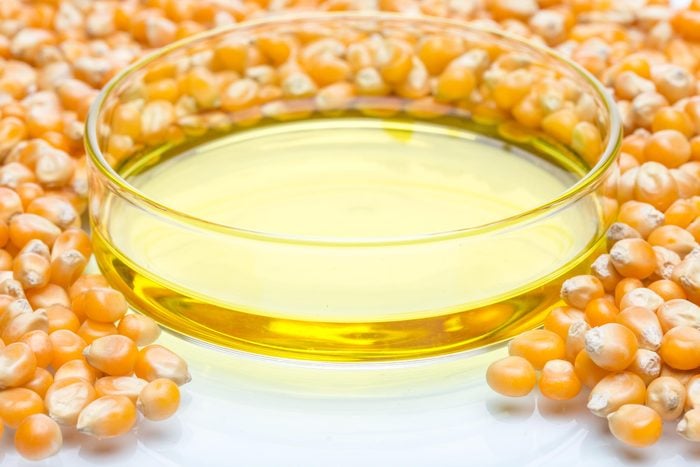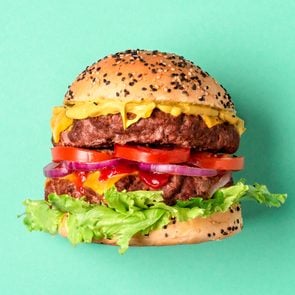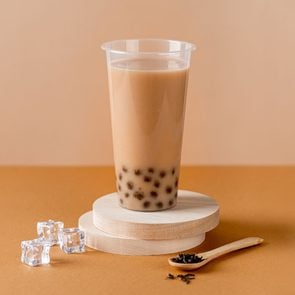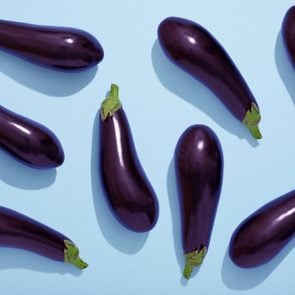What Is Corn Syrup, Exactly?
Updated: Jul. 13, 2022

Here's the scoop on one of the most commonly used ingredients in processed foods.
You use it in recipes for pecan pie, marshmallows, and homemade ice cream; see it listed in the ingredients of a pint of sorbet and a box of delicious dunkable cookies; and you find it in all sorts of fast food, from the obvious (McDonald’s Sprite) to the unexpected (Big Mac Sauce). Corn syrup is one of the most common ingredients in the foods we eat each day, and it’s as controversial as it is misunderstood. So what is corn syrup, and why are there so many confusing food facts about it?
“Corn syrup is a thick, sweet syrup made from the starch of corn and used in both home and commercial cooking,” says Trilety Wade, a nutritionist in Omaha, Nebraska. “However, the corn syrup you find at the grocery store is not to be confused with high-fructose corn syrup (HFCS), which is produced specifically for use in processed foods and drinks.”
To help you decode the many myths around corn syrup, we’re laying out the important facts and answering your most pressing questions, from “What is corn syrup?” to “Is corn syrup bad for you?” and beyond. Keep reading to meet the ubiquitous sweetener you’ve no doubt tasted before.
What exactly is corn syrup?
In its purest form, corn syrup is a type of sugar that comes from—you guessed it—corn. Unlike granulated sugar, which comes from sugar cane and sugar beets, corn syrup is a liquid. Both sweeteners are naturally occurring, but they have different chemical properties. Corn syrup is pure glucose, a simple sugar molecule, while table sugar is sucrose, a combo of glucose and fructose molecules.
What is light corn syrup?
Shop the baking aisle in your local supermarket, and you’ll spot two different types of corn syrup: light and dark. Dark corn syrup has an intense, molasses-like flavor and deep brown color. That comes from the addition of refiner’s syrup (the product of refining cane or beet sugar) and, in some cases, flavored extracts and food coloring.
Light corn syrup, on the other hand, doesn’t have any added coloring. But it may have added flavors, most commonly vanilla extract.
What’s the difference between corn syrup and high-fructose corn syrup?
Though both corn syrup and high-fructose corn syrup are made from cornstarch, according to the Food and Drug Administration, regular corn syrup is essentially 100 percent glucose. High-fructose corn syrup—which is used in mass-produced packaged foods and soft drinks like McDonald’s Coke—goes through further processing.
“Similar to corn syrup, HFCS is derived from corn but undergoes a process that changes some of the glucose to fructose, resulting in a much sweeter syrup,” says Wade. In fact, fructose can be up to twice as sweet as glucose.
What is corn syrup made of?
Corn syrup is made from cornstarch, which comes from the endosperm of corn kernels. After the starch is extracted from ground-up kernels, it’s converted into corn syrup using a process called acid hydrolysis.
Here’s how that works: The cornstarch is mixed with water and a weak solution of hydrochloric acid. Then it’s heated under pressure, which breaks down the starch molecules into glucose. From there, it’s boiled down so the excess water evaporates and a thick syrup remains.
How is corn syrup used?
In recipes, corn syrup acts as both a sweetener and a thickener. It’s why you’ll add it to white chocolate to make modeling chocolate, for example. And because its glucose molecules are different from the sucrose molecules of granulated sugar, corn syrup helps prevent sugary foods from crystallizing.
Though it has its uses in the home kitchen, corn syrup is mostly used by the commercial food industry to help improve texture and maintain freshness in packaged and processed foods. The reason corn syrup is so common in the foods we buy: It’s significantly cheaper than cane sugar, which helps food companies keep their prices down.
What foods contain corn syrup?
Recipes for homemade ice cream, sorbet, popsicles, jams and jellies, and certain desserts may call for corn syrup. And, of course, it’s found in plenty of processed snack foods—even fancy Starbucks drinks, thanks to ingredients like caramel sauce.
Even more prevalent is high-fructose corn syrup. “You’ll find high-fructose syrup in a majority of soft drinks and processed foods,” says Wade, noting that packaged goods are more likely to use HFCS than the type you use at home. “Take a look in your cupboard, and you’ll likely find high-fructose corn syrup in your cereals, sodas, juices, baked goods, ice creams, jams, and even applesauce! You will even find HFCS in unexpected foods, such as barbecue sauces and mustards.”
Is corn syrup bad for you?
According to the Mayo Clinic, there’s currently insufficient evidence to say that high-fructose corn syrup is any less healthy than other types of sweeteners. But having too much sugar in your diet is undeniably unhealthy. Scientists have conclusively linked it to health problems like weight gain, type 2 diabetes, metabolic syndrome, and high triglyceride levels.
Wade says that the problem with high-fructose corn syrup isn’t the fact that it has fructose. It’s that the sweetener is found in so many food products that it’s easy to accidentally go overboard with your sugar consumption.
“I still try to avoid HFCS as much as possible, because it adds an abundance of unnecessary calories and sugars to the diet,” says Wade. “The latest version of the Dietary Guidelines for Americans [2020–2025] recommends that less than 10 percent of your daily calories come from added sugars. So if you’re eating 2,000 calories a day, that means less than 200 calories should come from added sugars. It’s important to reduce your intake of added sugars, no matter whether those calories are coming from corn syrup or HFCS.”
What can you use instead of corn syrup?
Sugar is sugar, so there’s not much of a reason to substitute corn syrup for another sugar syrup. But if you’re out of corn syrup and need it for a recipe, here are some things you can use as a corn syrup substitute.
- 1 cup brown rice syrup
- 1 cup agave
- 1 cup honey
- 1 cup granulated sugar mixed with a quarter cup water
The next time someone asks, “What is corn syrup?” consider yourself prepared. Brush up on other food trivia by reading about the history of pizza and the real reason saffron is so expensive.
Sources:
- Trilety Wade, a nutritionist in Omaha, Nebraska
- Science Direct: “Corn Syrup”
- Food and Drug Administration: “High Fructose Corn Syrup Questions and Answers”



